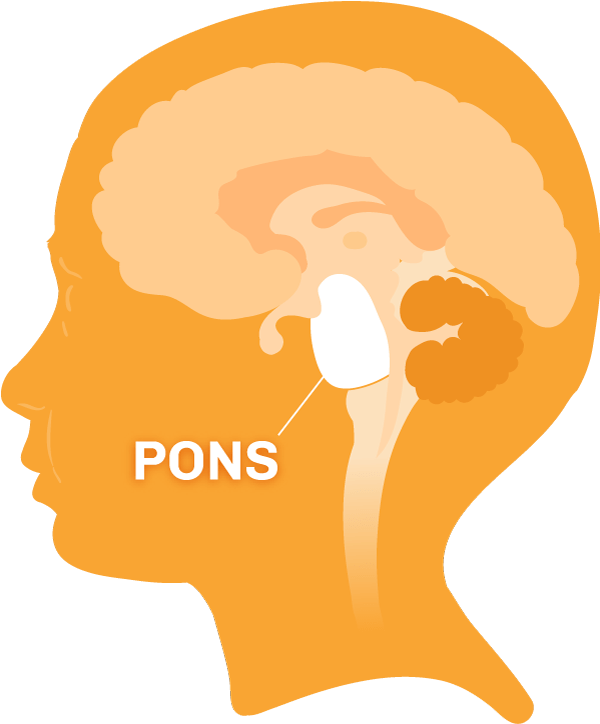What is diffuse midline glioma? What is DMG?
DMG, or diffuse midline glioma, is a type of brain tumor found originating from glial cells in the central nervous system, typically in the pons region of the brainstem, but it can also be found in the thalamus, spinal cord and cerebellum.

Diffuse
Diffuse means that the tumor is not well-contained – it grows out into other tissue so that cancer cells mix with healthy cells.
Midline
Midline is a reference to the location of the tumor – meaning the midline of the brain. DMG tumors are typically found in the pons region of the brain. The pons is responsible for a number of important bodily functions, like breathing, sleeping, bladder control, and balance.
Glioma
Glioma is a general term for tumors originating from glial cells. Glial cells are found throughout the brain. They make up the white matter of the brain that surrounds and supports the neurons (neurons are cells that carry messages in the brain).
Recently diagnosed with diffuse midline glioma or DMG?
While the diagnosis of DMG is difficult, there are steps you can take to improve the quality of care for your child. Let us walk you through the steps of what to do after diagnosis.
Diffuse Midline Glioma vs Diffuse Intrinsic Pontine Glioma
DMG (Diffuse Midline Glioma) and DIPG (Diffuse Intrinsic Pontine Glioma) are often categorized together but can have different treatments that can lead to slightly different prognosis paths. Still, much of the science, the research, foundational funding and data for both types of brain tumors are grouped under DIPG, mainly because historically much of the work researching DIPG since around 2012 led to the reclassification and current definitions of DMG.
Who is Affected by DMG Cancer?
DMG cancer primarily affects children, with most diagnoses occurring between 5 and 7 years of age. It makes up 10-15% of all brain tumors in children, with about 150-300 new diagnoses per year in the United States. Unfortunately, fewer than 10% of children survive two years from diagnosis.
Why Do Certain Children Get DMG?
In short, doctors don’t know why people get diffuse midline glioma. There are no known associations of DMG with any environmental or infectious agents. Most researchers who study DMG believe these brain tumors, similar to other tumors affecting children, arise when normal developmental and maturational processes go awry.
Clinical Signs of Diffuse Midline Glioma
Sometimes parents notice:
- odd eye movements
- slurred speech
- difficulty swallowing
- trouble maintaining balance
- or drooping of one part of their child’s face
DMG tumors and pontine tumors can press on and interfere with the function of these nerves, leading to weakness in an arm and/or a leg.
Tumors in the brainstem, like most DMG tumors, can also cause increased pressure within the skull. Increased pressure can cause patients to complain of persistent headaches and in some patients can lead to nausea and vomiting.
DMG Appearance on MRI
A magnetic resonance imaging (MRI) scan is the best non-invasive way to determine the size and properties of brain tumors. Because the MRI appearance of the two most common types of pediatric brainstem tumors, DMGs and pilocytic astrocytomas, are so different, they can be accurately identified the vast majority of the time by MRI alone.
In rare cases where the diagnosis is uncertain based on MRI results, your doctor may order a biopsy.
Clinical Course of Diffuse Midline Glioma
Once the diagnosis of DMG is suspected, there is a standard course of treatment that your doctor will most likely follow:
- At the time of diagnosis, steroids are often the first treatment offered to patients with diffuse intrinsic pontine glioma.
- Soon after the steroid regimen, patients are prepped for radiation therapy.
- Unfortunately, no chemotherapy drugs to date are known to have an impact on survival.
In almost all cases, after about 6 to 12 months, the DMG tumor starts to grow again. Once the tumor has started to grow again, no further treatment has been shown to improve survival. When children start to have neurologic symptoms, they are often restarted on steroids.
More on the Clinical Course of DIPG / DMG
See also: